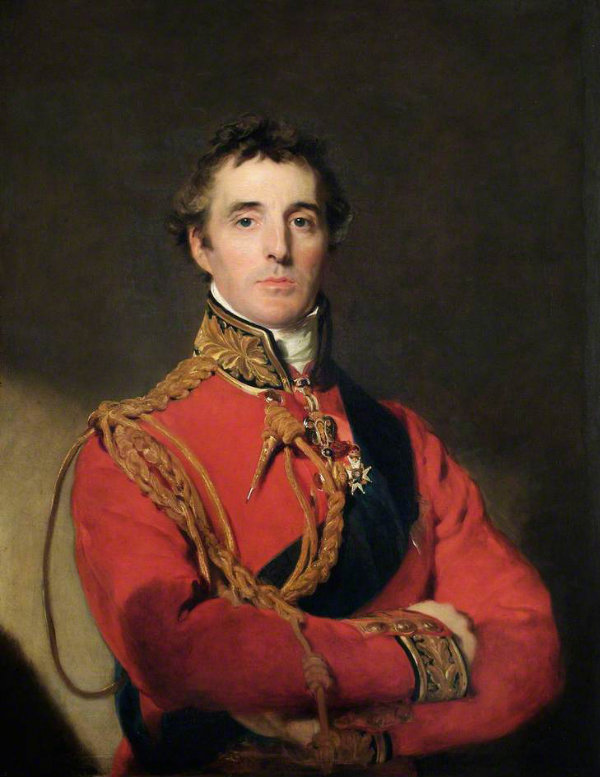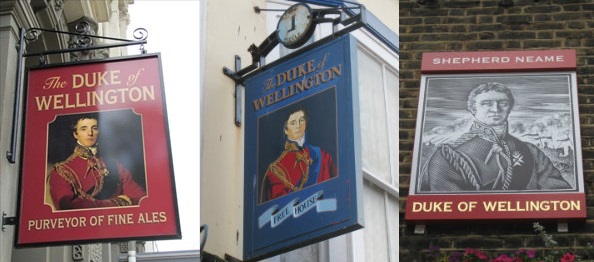With the bicentenary of the Battle of Waterloo fast approaching, let us get to know the Duke of Wellington, the Iron Duke, who caused the demise of the highly revered French political and military leader, Napoleon Bonaparte.
Irish Descent
Though the Iron Duke is well-remembered as a British war hero and was even honored by being given land and titles in England during his lifetime, Arthur Wellesley was actually of Irish descent and was born in Dublin, Ireland.
Nevertheless, the Duke of Wellington never thought of himself as one and even spoke about it, rather, tactlessly, with these words: “because a man is born in a stable it does not make him a horse.”
Got Involved in Politics at a Young Age
While it is a common knowledge that the Iron Duke went on to hold the Prime Minister post twice in his lifetime after he retired from the battlefield, the Duke of Wellington’s experience with politics went beyond that and at a very young age.
After being educated at at Eton, in Brussels as well as in France – ironically, this same country spawned Napoleon which he fought against in the battle of Waterloo – Arthur Wellesley, at 20, served in the Irish Parliament for five years.
Had No High Regard for the British Army
Actually, at first, the Iron Duke thought the British Army was pretty rubbish.
At 25, the Duke of Wellington in the Flanders Campaign during the French Revolutionary War in 1794 and was quite appalled at how the British troops handled military strategy during the said fight. It was this very same experience that moved him to study the art of war.
Foresaw the Use of Camouflage in the Military…
It can be said that the Iron Duke pioneered it.
The Duke of Wellington was fond of wearing dark clothes without any decorations during his battles. This way, the enemies would not be able to pinpoint him from the other officers that were in the battlefield.
Because of his penchant for this kind of “camouflage”, he was not an easy target when it came to assassination attempts. Furthermore, his ordinary clothes allowed him to come close to the front lines which, then, allowed him to manage his troops while they were engaged in the thick of the fight.
His wearing dark plain clothes during his fights were seen as a forerunner of the use of camouflage clothing come World War One.
…And Pioneered the Military Crew Cut
In a time when powdered wigs and pig-tailed hair were the fashion hair norms of men, the Iron Duke stood out with his short “military crew cut”.
Arthur Wellesley always was sharply dressed. It was just that his hair was another matter — it was styled with being functional in mind and not being in the height of that era’s fashion. It took a while before that sense of having less hair to worry about trickled down the military line.
Then, the military crew cut was born.
Wasn’t a Popular Person Back Home
The Iron Duke was well-respected especially after his victory over Napoleon Bonaparte. However, he did forge a notoriously unsuccessful career as a Prime Minister later in his life.
Arthur had always hated attention and even felt very embarrassed when the crowds cheered for him. He spoke plainly which was frequently interpreted as rudeness. He never even addressed his troops en masse because he believed it was “the stuff of players”.
Even during his Spanish and Portuguese campaigns, as he was defeating Napoleon’s generals, the British government was very doubtful about his capabilities as a military leader and refused to send supplies and reinforcements to help him. There was even one time when he was called back home to be court-martialled. Furthermore, the Prince Regent, the future George IV, had higher regard for the French military leader Wellington defeated — Napoleon.
Nevertheless, these experiences led to the Duke of Wellington being more resourceful as a soldier and a military leader. On the other hand, Napoleon Bonaparte overindulged in resources, troops and even loyalty that he squandered most of it.
A Military Leader that Hated Wars
The Iron Duke made it a point in his military career to avoid unnecessary bloodshed, always. It was even said that after reading the list of dead after the Battle of Waterloo, the duke, who was quite stoic, cried. he got easily upset with the carnage that resulted from battles and did not glorify fighting.
The Duke of Wellington was also a reserved man though he did demand obedience from the soldiers under him. He raised his voice at soldiers he deemed too pampered and as a junior officer, failed to hand out punishments to the men who committed thievery and pillages while under his watch.
He Quit while in His Prime
The Iron Duke knew when to retreat. He did so often to avoid heavy casualties and in doing so, he also avoided defeat. Because of this one characteristic, he never lost in battle.
Additionally, when he reached the peak of his military career after winning against Napoleon in the Battle of Waterloo, Wellington retired from fighting. He was only 46.
Little Less than a Hundred Pubs Named After Him
There are about fifty-three pubs that bear the name Duke of Wellington. In addition to that, thirty-seven other go by the simple name Wellington. That number is in England alone.
In Melbourne, one can find the oldest licensed pub and guess what its name is? Yes, The Duke of Wellington. Then, there are the ones simply named The Duke.
So, if you are an Iron Duke aficionado, just make sure you have a high alcohol tolerance to be able to round up all these places.
Nothing to Do with Wellington Beef; Had Much to Do with Wellington Boots
The Wellington boots were named after the custom-made footwear the Iron Duke loved to wear in all occasions. Wellington boots were low-heeled and lined with calf skin so as to prevent or ease strains caused by being in the battlefield all day long. But its classic look also made it an ideal footwear for a fashionable night with the ton. In 1852, Wellington boots started to be made from rubber instead of leather.
On the other hand, there is no strong indication that Wellington Beef was a favorite of the Duke, thus, its name. As a matter of fact, there are no evidences that show this dish was a 19th-century fare though some assumed this classic British food came out from Arthur’s love for beef fillet covered in foie gras pâté and mushrooms and cooked in pastry.
Some also believed that the Wellington Beef was a classic French fare and renaming it as such was a PR stunt same as what the Americans did when they renamed French Fries as Freedom Fries.
The National Portrait Gallery will be opening a new exhibit in line with the 200th anniversary celebration of the Battle of Waterloo. The new display is entitled Wellington: Triumphs, Politics and Passions. It opened Thursday, March 12.

